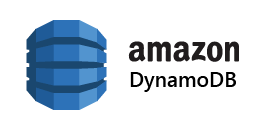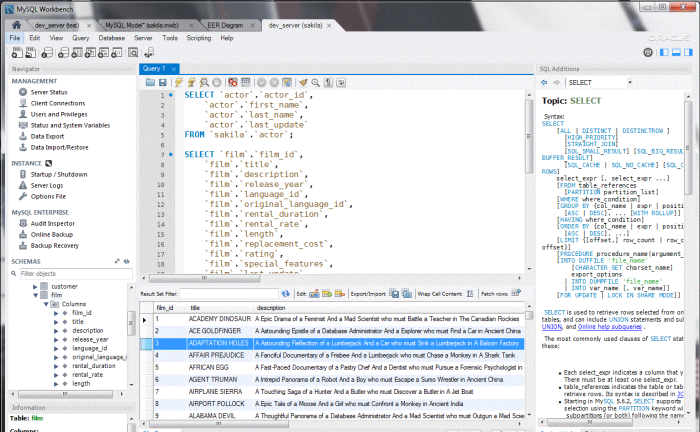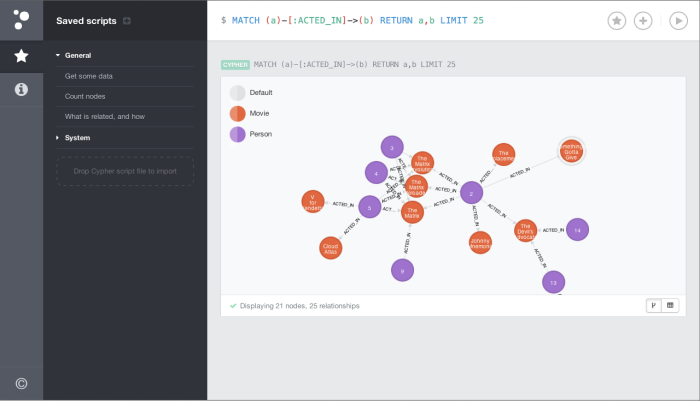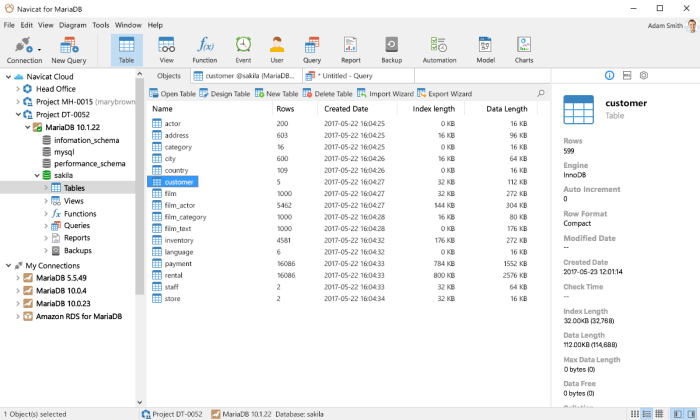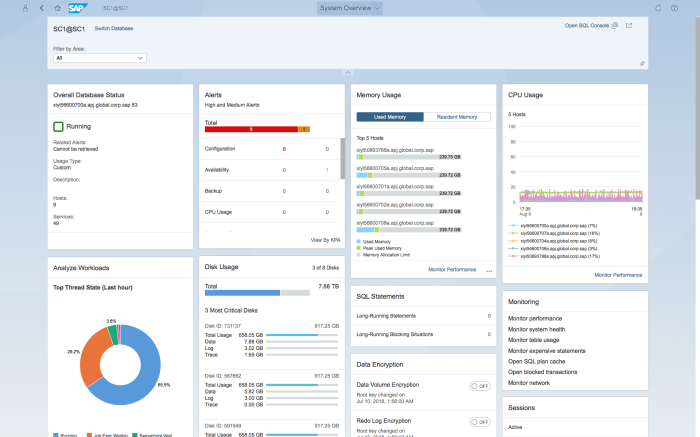Database software enables businesses to store, manage, search, and extract data from internal or customer databases. Collectively, the data, the database management software, and other database programs associated with it form a database management system (DBMS).
Today, database management systems are empowering applications to be more useful, reports to be more accurate, and operations to be more optimized by supplying and allowing data management wherever and whenever needed.
Table of Contents
- What Is Database Software?
- Best Database Software and Tools
- Types of Database Software
- Features of Database Software
- Database Software for Specific Industries and Applications
What Is Database Software?
Database software provides the tools and programs for users to create, manage, and maintain databases. Users are able to store, modify, search, and extract information using different methods, such as manually using the software’s interface or automatically running scheduled scripts. A DBMS provides assessment, inventory, distributed access, collaboration, and verified transactions.
A modern DBMS includes more features and intelligence to its software to ensure that users and applications can access data accurately, consistently, and quickly. Because simultaneous requests for database contents can come from different applications in different locations, enterprise-grade customer database software maintains the integrity and security of data at rest and in transit.
Best Database Software and Tools
The best database software takes into consideration the most effective ways it can store and manipulate customer data, provide efficient access to users and applications, as well as storing large volumes of data at a practical price. Here is our list of recommended database software and tools.
SAP HANA
SAP HANA is an in-memory database ideal for transactional and analytical workloads. It is a column-oriented database that enables companies to process large databases comparably fast. This is possible by storing data in column-based tables in main memory and bringing together online analytical processing (OLAP) and online transactional processing (OLTP).
SAP HANA not only stores and retrieves data requested by applications, it also offers advanced search, analytics, and data integration capabilities for both structured and unstructured data. It has comprehensive data and application security, secure setup, and machine learning capabilities. Users can deploy the database software on premises, on multi-clouds, and in a hybrid configuration.
Microsoft SQL Server
Microsoft SQL Server can be deployed both on premises and in the cloud through the Azure platform. The software continues to expand its features, allowing both high-performance transaction processing and real-time analytics on transactional data.
SQL Server is applicable in many demanding computing environments. In-memory database operations increase the transaction processing rate and near-real-time analysis without the need for another data warehouse for reporting and analytics. Users can query across relational, non-relational, structured, and unstructured data. The software also includes tools for automatic tuning, monitoring, and optimization of queries and workloads.
Amazon DynamoDB
DynamoDB is one of the database programs and services offered by Amazon. It is a fully managed, serverless, key-value NoSQL database purposefully built to run high-performance applications, such as high-traffic web applications, e-commerce systems, and gaming applications. The cloud database software includes built-in security, continuous backups, automated replication, in-memory caching, and data export tools.
DynamoDB supports companies developing software applications that require multiple concurrent connections up to millions of requests per second. It is applicable for media and entertainment workloads, such as real-time video streaming and interactive content. Other features include PartiQL (an SQL-compatible query language), fast table restoration, and export of data to AWS S3.
IBM Db2
IBM Db2 relational database is part of the Db2 family of data management products. It is an enterprise-ready data management system with integrated artificial intelligence features. Users can explore data faster with natural language queries, build AI applications using popular languages, use graphs on SQL data, and analyze blockchain data natively.
IBM Db2 delivers resiliency, performance, and cost effectiveness for transactional workloads. When deployed in the cloud using the Cloud Pak for data, the database becomes a containerized version with microservices, offering several benefits. It can accelerate data exploration using data virtualization, reduce operational costs with automated administration, and enhance productivity with machine learning query optimization and confidence-based querying.
MySQL
MySQL is an open-source relational database system. It is particularly popular database software for small businesses. It also supports several macOS versions for users looking for database software for Mac. Several commercial editions are available, including a fully managed database service built on the Enterprise edition. This allows users to choose the features they need. Oracle provides the support since acquiring the company.
MySQL includes a comprehensive set of features and management tools. It has document store capability that allows users to develop schema-free document database apps. The software also performs automatic, real-time data-at-rest encryption, masking and de-identification to protect sensitive data, and hot online backups. It also offers high availability, scalability, authentication, firewalls, auditing, monitoring, and a unified visual tool for data architects, developers, and DBAs.
MongoDB
MongoDB is a document database that offers scalability and flexibility, with options to deploy on the cloud, on-premise commercially with its enterprise edition, and free community edition. It stores data in flexible, JSON-like documents, with fields that can vary from document to document. Users can perform ad hoc queries, indexing, and real-time aggregation.
MongoDB is a distributed database that allows for high availability, horizontal scaling, and easy geographic distribution. It has end-to-end security, management tools for automation, monitoring, backup, and native GUI schema visualization for analyzing documents and displaying structures. This free database software can be downloaded, but the fully managed DBaaS Atlas is also available across AWS, Azure, and Google Cloud regions.
Neo4j
Neo4j is a graph database management system. Graph databases are non-relational databases that store relationships among objects. It allows users to run algorithms easily, such as finding the object with the most connections. The software provides developers and data scientists tools to quickly build intelligent apps and machine-learning workflows.
Neo4j is available as a fully managed cloud service or self-hosted. The software stores and manages data in its natural connected state, index-free, to allow fast queries and deeper analytics. It combines native graph storage, scalable architecture, and ACID compliance. The distributed cluster architecture provides high performance with parallelized throughput. It also has schema-based security, role-based access control, and adherance to data privacy regulations.
MariaDB
MariaDB offers a free and open-source community server edition, as well as premium enterprise and cloud editions. The original developers of MySQL forked this database solution and it remains compatible with MySQL. It is the database behind Wikipedia and WordPress, and is used in many mobile apps, as well as banking, social media, and e-commerce sites worldwide.
MariaDB supports modern SQL functionality, as well as Window functions, temporal data tables, and JSON functions. Its SQL dialect extends to include columnar storage and other functionality. It integrates with many third-party engines, and supports clustering and high availability through a database proxy.
PostgreSQL
PostgreSQL is a free, open-source, object-relational database software used by businesses and organizations of all sizes. Actively developed for over 30 years, it is reliable, has robust features, and offers solid database performance. The system uses and extends SQL and combines features to safely store and scale a range of workloads.
PostgreSQL is compatible with all major operating systems, is ACID-compliant, and includes powerful add-ons. Developers use it to build apps, while database administrators use it for data protection and to build fault-tolerant systems. The database supports multiple data types, including structured, document, geometry, and custom. It also has built-in concurrency, disaster recovery, security, text search, and extensibility features.
Apache Cassandra
Cassandra from the Apache Software Foundation is an open-source, distributed NoSQL database software. It is highly available and scalable without compromising performance. Users can install it on commodity hardware for on-premises deployment, as well as on cloud infrastructure. It is the preferred customer database software of organizations like CERN, Discord, Instagram, Bloomberg, and Macquarie Bank.
Cassandra has hybrid architecture that allows it to experience an entire data center outage without data loss. It supports synchronous and asynchronous replication, fault tolerance, audit logging, scalability, and identical distributed clustering. It can run on multiple machines, but appear to users as a unified whole. The database software enables rapid, ad-hoc organization and analysis of high volume, disparate data types.
Types of Database Software
Today, many types of database software exist, with categories depending on its system of storing data, architecture, managing relationships, deployment, and availability, among others.
Centralized Database
In a centralized database, the storage maintenance of the database is in a single location, usually in a server in a secured data center. Advantages include maximum data integrity and minimal data redundancy. Disadvantages include being a single point of failure and a tendency to slow down when a database gets too big, and when simultaneous access increases.
Distributed Database
In distributed database systems, data is placed among multiple databases connected by a communication link. These databases can reside in identical machines running the same OS and applications, or on different hardware, OS, and applications. Distributed systems can be easier to expand and can have higher fault tolerance.
On-Premises Database
On-premises database software runs on company-owned servers under the administration and maintenance of its employees. The company secures it in a data room or data center with corresponding physical and electronic safety measures applied.
Cloud Database
Cloud database software resides on the cloud network infrastructure of a service provider, and customers pay for its use. Some services can offer only the infrastructure and the hardware, with users responsible to install and maintain their client database software on the cloud. Other providers offer a full database management system that includes the infrastructure, different types of database software, maintenance, and other services such as reports and analysis.
Read more: Best Online Database Software for 2021
Relational Database
A relational database is database system that stores data in rows and columns, forming a relation. It uses SQL for storing, manipulating, retrieving, and maintaining data. The database exhibits ACID properties (atomicity, consistency, isolation, and durability). This ensures transactions are either committed or aborted, preserving values before and after the operation, where one transaction isolated from another and data changes remain permanent after the operation.
Hierarchical Database
Hierarchical database software organizes data in a tree-like structure. It stores data as records that contain a collection of fields. Records connect with one another through links. Each child record has only one parent record, but a parent record can have one or more child records.
Network Database
Network database software stores data similarly to a hierarchical data model, except that it represents records as nodes. Nodes can have many-to-many links or relationships with other nodes. Instead of a tree-like structure, it forms a net-like structure, where there are multiple paths of access to a record.
Object-Oriented Database
Object-oriented database software stores and represents data as objects, similar to the concept used in object-oriented programming (OOP). It is different from table-oriented relational database in that this database can work with complex data objects, as those used in OOP languages. The database software stores data objects with all their properties persisting in the database.
NoSQL Database
NoSQL, non-SQL, or not only SQL databases are a new type of database that stores a wide range of data. It stores information not only in tabular form, but in different ways to provide database applications faster and better ways to access data. Some of the sub-types under the NoSQL database umbrella are key-value storage, document-oriented, graph, and wide-column stores. These databases are highly scalable and more efficient in handling big data.
Features of Database Software
The best database software provides users and applications high availability at all times. It provides accurate, consistent, and relevant data to multiple users while keeping no redundant records. The right features in a DBMS also ensure that data is secure, while providing administrators the tools to manage and maintain the database easily.
Flexible Deployment
Companies today need more options in how they deploy their database. Database software should allow users to deploy in hybrid setups, both in the cloud and on-premises.
Support for Multiple Workloads
Database management systems should be able to support different types of data models, processing, and workload from multiple users. These can be transactional, analytical, and graphical applications using the same data.
Balance of Performance and Cost
Database management software can provide users the best way to optimize performance and maximize storage at the least cost. Users will be able to access data, gain value from its usage, and generate revenue at a practical price.
Simplified Administration
Database programs enable administrators to manage the integrity of the database and maintain its reliability for continued operations. It should have intuitive admin tools to set controls and configurations for database security, backup strategy, and scalability, as well as monitoring resource usage.
Connectivity
Database software should be able to support various querying languages and other applications such as those for virtualization and program interfacing. It should also be ready to integrate with other enterprise systems like business intelligence software. Built-in development capabilities can also facilitate application development.
Database Software for Specific Industries and Applications
DBMS are helping companies across industries to adopt digital transformation. As a result, some industries are growing faster than others globally.
Mining
Mining companies can gain deeper insight into their operations and optimize equipment usage with the help of database management software. The DBMS allows companies to capture opportunities while removing common obstacles to the process.
- Mining and processing: Database tools provides quality data that helps users identify and prioritize critical material issues and promote visibility across supply, production, inventory, and demand sectors of the organization.
- Asset management: Users can connect to a central source of information to predict maintenance schedules and optimize the service of all company assets.
- Warehouse management: Companies can improve the management and operations of their warehouses with database software. It delivers real-time information to applications that monitor stockroom productivity and logistic processes.
Logistics
Cargo transportation and logistic companies continuously look for solutions to cut costs and grow revenue.
- Transportation management: Database software can provide companies information to accurately forecast demand and shipment volumes.
- Order management: Users can easily get information to consolidate orders and maximize revenues for every transportation expense.
- Logistics management: Database management software can provide applications real-time data to enhance the visibility of cargo using freight, fleet, and other modes of transportation.
Manufacturing
Database management software can provide manufacturing companies the information and insights needed to build the right products, optimize production, and offer the right services.
- Research and development: Database systems can provide engineers quick access to data and test results to develop innovative products and get them to market fast.
- Supply management: Users are able to create and maintain supply plans using the latest data, as well as predict and prepare for changes in global supply and demand.
Read next: How Are the Complexities of Supply Chain Managed by Project Management?


